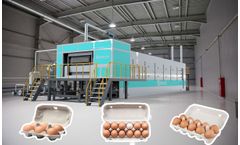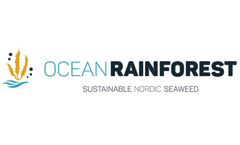Pulpwood Articles & Analysis
19 articles found
Egg cartons. Those humble cardboard companions that cradle our breakfast essentials. But have you ever stopped to think about their environmental impact? Traditional egg cartons, often made from polystyrene foam, can take centuries to decompose, adding to landfill woes. Thankfully, there's a brighter side to the egg carton story: sustainable paper egg cartons! These eco-friendly options offer a ...
A great investment into an egg tray making machine could be very expensive. Obviously, it depends on your location obtaining these, how large these are, and what their overall production capabilities are going to be. A few of these are extremely elaborate, effective at creating 1000s of egg trays an hour if that is what you want. You should also look at the quality and thickness of the trays that ...
The microfiber's main spunlace nonwoven fabric features are Soft ,light, high strength,and good absorbent.When the microfiber is used to spunlace nonwoven fabric, the finished product will be a different soft textile.Not only fundamentally changed the conventional synthetic fiber products appearance, but also can obtain the unique functions.Due to the nature of microfibers, greatly increasing the ...
A feasibility study on Blue Fashion using cultivated seaweed for textile production The goal is to study the feasibility of “Blue Fashion” using seaweed cultivated and harvested in the North Atlantic and process it into seaweed fibres, that can be used in knitted and woven fabric. The study will focus on four specific objectives: Identify and describe the functionalities of using ...
Udo Siebert, sales and service partner of Lindner Recyclingtech in Brazil, knows no better machine than Lindner’s all-rounder Urraco 75 to shred eucalyptus bark, which pulp and paper mills as well as wood panel producers in Brazil use to generate RDF to supply their own energy. A market with great potential. They say that Curitiba is Brazil’s greenest city. As early as the 1970s the ...
Valtra and Kesla are an ideal pairing for forest tasks. Customers have used Valtra-Kesla combinations for years, of course, but now the two companies are also teaming up in product development and the sales network. For example, in Finland and some other markets Valtra and Kesla products can be purchased from the same dealer. The Unlimited Studio at the Valtra factory in Suolahti has also ...
Smart Elbow® Triumphs Over Abrasion in Pulp and Paper Industry The first Smart Elbow® installed at Northwood in the hog fuel conveying system (above) worked so well that the two sweep elbows also shown above were eventually replaced with two more 12" cast iron HammerTek Smart Elbows® At Northwood Pulp and Timber Ltd. of Prince George, British Columbia, Maintenance Super-visor Mario ...
Many are being destroyed for oil palm or pulpwood plantations, soy farms, slash-and-burn farming and other uses. ...
ByEnsia
Tall oil is a viscous oily liquid and considered one of the most important by-products of wood pulp manufacturing. Through a fractioning process crude tall oil can be turned into valuable fatty and resin acids. Vacuums play a key role in this procedure. An application in Finland currently proves that technology from Hanover-based Körting is ideally suited for this purpose. Crude tall oil is ...
Wetlands International is member of the Enviromental Paper Network to reverse the trend that peatlands (50% of the world's wetlands) are destroyed by the pulpwood industry. More at www.environmentalpaper.eu or www.environmentalpaper.org. ...
” TNC is jump-starting the future forest to protect not only the forest, but also the goods the forest provides, such as clean water, wildlife habitat, tourism, logs and pulpwood. “We care about that because our livelihoods up here really depend on that,” says Cornett. ...
ByEnsia
This post is co-authored with Dave Thau, senior developer advocate for Google Earth Engine, Google's satellite image processing platform. By the time we find out about deforestation, it’s usually too late to take action. Scientists have been studying forests for centuries, chronicling the vital importance of these ecosystems for human society. But most of us still lack timely and reliable ...
However, mismanagement and high appetite for commodities such as palm oil and pulpwood have contributed to rapid deforestation in the country, most recently demonstrated by last summer’s forest fires. ...
A common theme in many of these regions is growing global demand for commodities such as soy, beef, palm oil, pulpwood, and biofuels. More granular analysis is needed to identify and quantify the precise drivers of forest loss. ...
Indonesia has the world’s third-largest rainforest, which is a haven for biodiversity and an economic lifeline for many rural communities. However, Indonesian forests are in rapid decline and the country regularly tops deforestation hotspots lists. The key to protecting Indonesia’s forests remains reforming its massive forestry and agriculture sectors. By giving these industries the ...
Brazil is one of the most biologically diverse countries in the world. What is less known is that the country is the fourth largest industrial roundwood (timber left as logs, not sawn into planks) and wood pulp producer and ninth largest paper producer in the world. Brazil’s forest sector contributed 5 percent to the national gross domestic product in 2012. Brazil’s forests are not ...
The city of Swiecie in Northern Poland has a population of 27,000, and another 100,000 people live within 30 kilometers. At 24%, the region’s high unemployment rate is a major concern for local residents. The 1990s saw the downsizing or closure of several large companies. No new large-scale investments creating local employment have beenrealized. The city is a regional center for forest product ...
An accidental release of non-toxic waste from decommissioned wood pulp industry in the River Numedalslågen, Southern Norway, occurred in the upper part of the accessible stretches for anadromous fish during a study of migration behaviour of radio tagged Atlantic salmon (Salmo salar, n=32, body length 51–99 cm). The fish had completed the migration phase and initiated the resident phase ...
A sterol esterase purified from cultures of the sapstain fungus Ophiostoma piceae was able to hydrolyse sterol esters and glycerides. The kinetics of sterol esters and triglyceride hydrolysis by this new esterase, estimated using a pH-stat, showed a Kmapp and a kcatapp in the range of 0.9–1.1 mM and 70–300 s-1, respectively. Its ability to hydrolyse both pure sterol esters and natural mixtures of ...














